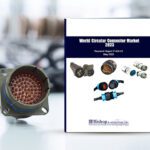A High-Speed Connectivity Solution for Achieving 112Gb/s PAM4 Data Rates
System architects are using over-the-board technologies to extend signal reach and density and achieve high-speed data rates by routing signals through ultra-low-skew twinax cable instead of through expensive, lossy PCBs.
Industry observers have noted that emerging high-speed system requirements of 28Gb/s and 56Gb/s, and now 112Gb/s, are nearing the physical limitations of traditional electronic hardware design elements, in particular traditional PCB substrate and component solutions. With rates of 112Gb/s PAM4 and beyond, developers are challenged with balancing increasing throughput, scalability, and density demands with concerns about power consumption, thermal dissipation, signal integrity, time to market, and — of course — cost.
To achieve these data rates, designers are often required to use special PCB materials with lower dielectric constants and dissipation factors and, unfortunately, these materials are often very expensive. Another challenge posed by higher data rates is that the signal integrity (SI) channel performance budget significantly compresses the allowed trace lengths. Even when more expensive high-speed PCB materials are used, it’s difficult to have trace lengths of any significant distance.
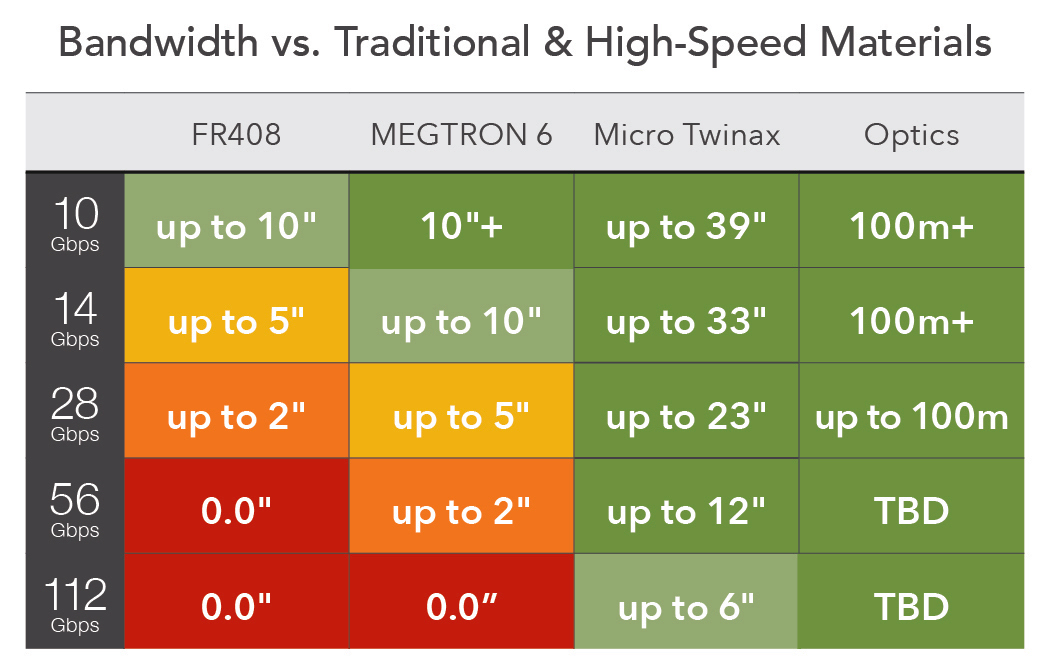
Trace lengths comparison of PCB materials, twinax cable, and optics
To combat this and allow for usable trace lengths at higher data rates, multiple expensive retimer integrated circuit (IC) chips are often required every few inches along the signal path. In short, routing today’s high-speed signals in a PCB is both challenging and expensive.
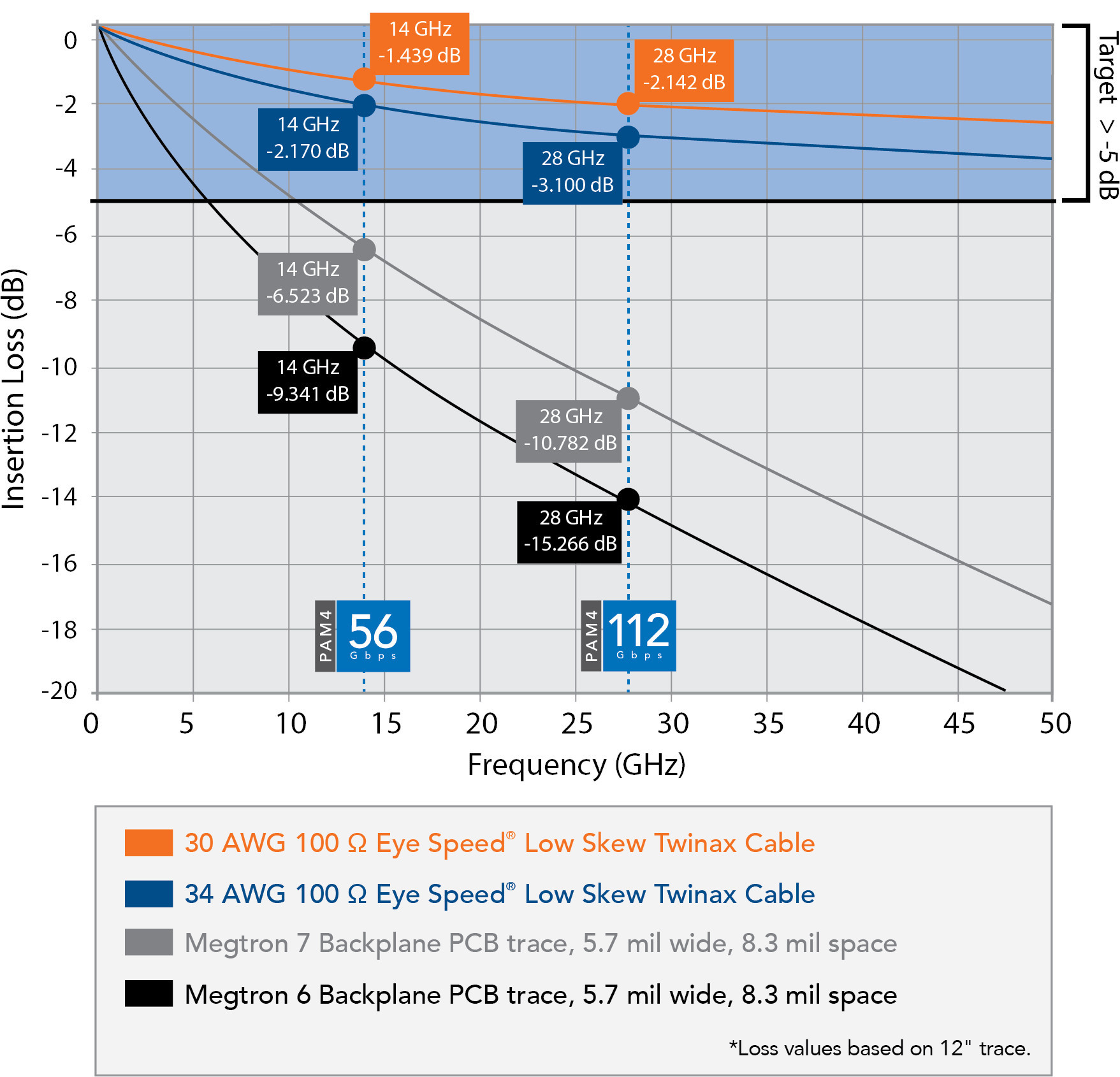
Comparison of insertion loss for PCB materials vs. micro twinax cable
Over-the-Board Technologies Offer an Alternative Approach
System architects are now using an alternative approach to extend signal reach and density to achieve next-gen speeds by routing signals through low-loss, ultra-low-skew twinax cable instead of through expensive, lossy PCBs.
In a typical mid-board application, a cable connector is located next to a field programmable gate array (FPGA) or an application-specific integrated circuit (ASIC). The signal launches through discrete or ribbon twinax cable, over a minimum trace length across the lossy PCB, to another location on the board or to an input/output (I/O) connector, such as a quad small form factor pluggable (QSFP).
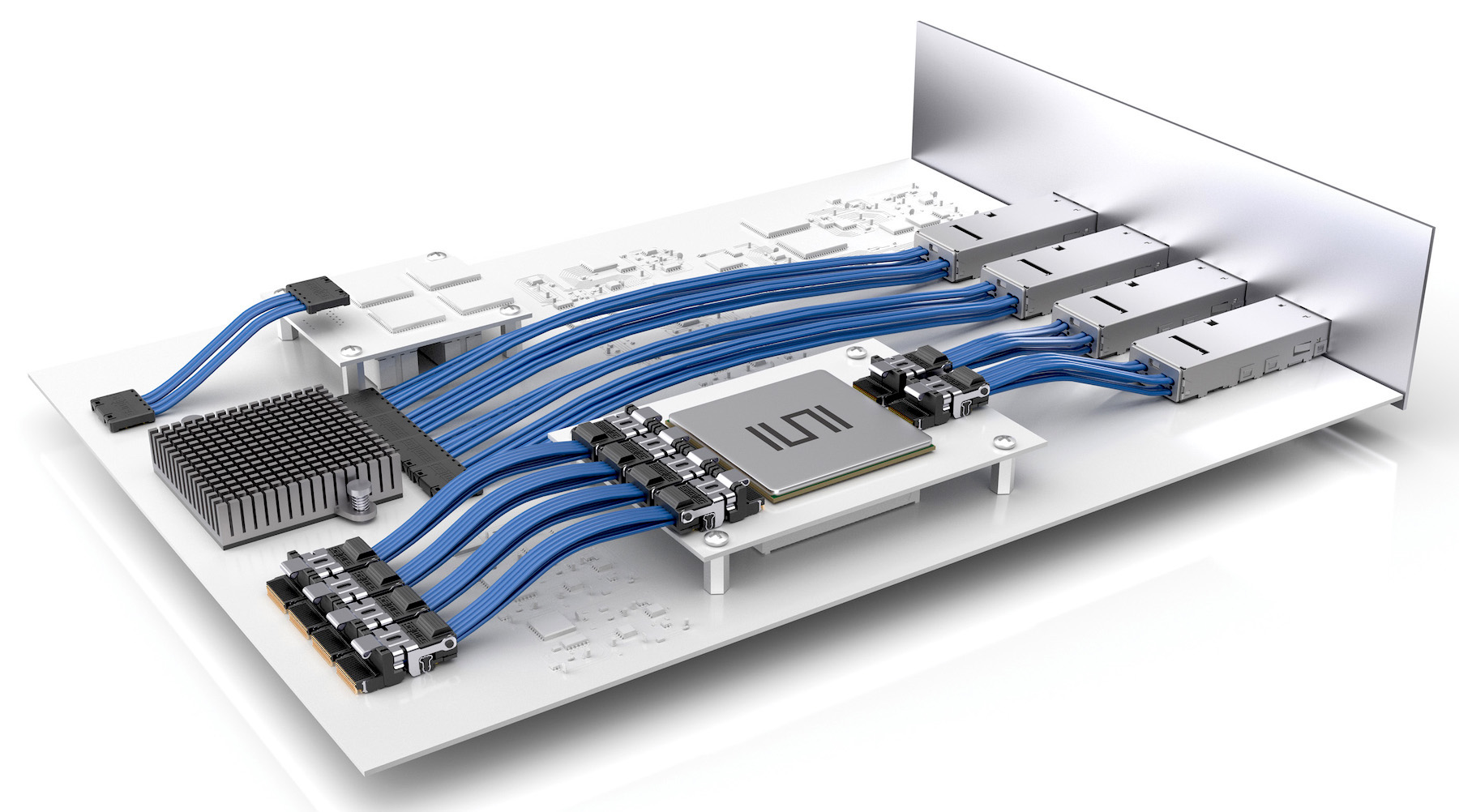
Designers can extend signal reach with low-loss, ultra-low-skew twinax cable, instead of routing signals through the lossy PCB.
High-performance cable systems allow designers to connect one board to another within a rack, establishing a flexible backplane architecture, and can also be used as a rack-to-rack interconnects. Both approaches retain the traditional backplane architecture while reducing PCB complexity and achieving higher performance targets — and that’s not all.
There are many advantages to this approach: First, designers can achieve those higher data rates of 56Gb/s, 112Gb/s, and beyond. This strategy also simplifies board design, allows for a more flexible, modular architecture, and supports thermal dissipation by eliminating retimers and increasing airflow. In addition, it minimizes the need for expensive PCB material and higher layer counts and reduces costs.
Connector Design
Many design elements contribute to the overall performance of the cable assembly system discussed above, including direct-attach high-speed connectors, twinax cable, and PCB routing strategies.
The direct-attach approach often eliminates transition boards in cable assembly connectors. For example, contact systems must be intentionally designed to accept the direct-attach geometry of ultra-low-skew twinax cable. This is not merely a slight modification to an existing contact, where the leads are extended to allow the cable to attach. The direct attach contact system is designed to minimize impedance variation throughout the cable transition region to mitigate resonance within the channel.
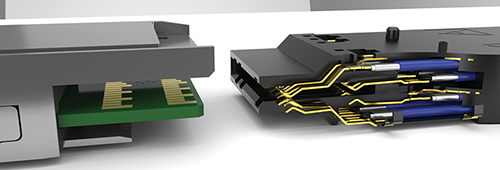
Contact systems are designed to optimize signal integrity performance.
Cable is the Key
The impact of cable on system performance is critical. Samtec Eye Speed ultra-low-skew cable technology uses co-extruded twinax cable and best-in-class process control. This combination improves cable loss and critical intra-pair skew. Co-extrusion is superior to the performance limitations and inconsistencies of conventional twinax designs; it eliminates performance limitations such as higher loss, suck-out, and higher skew and resonances.
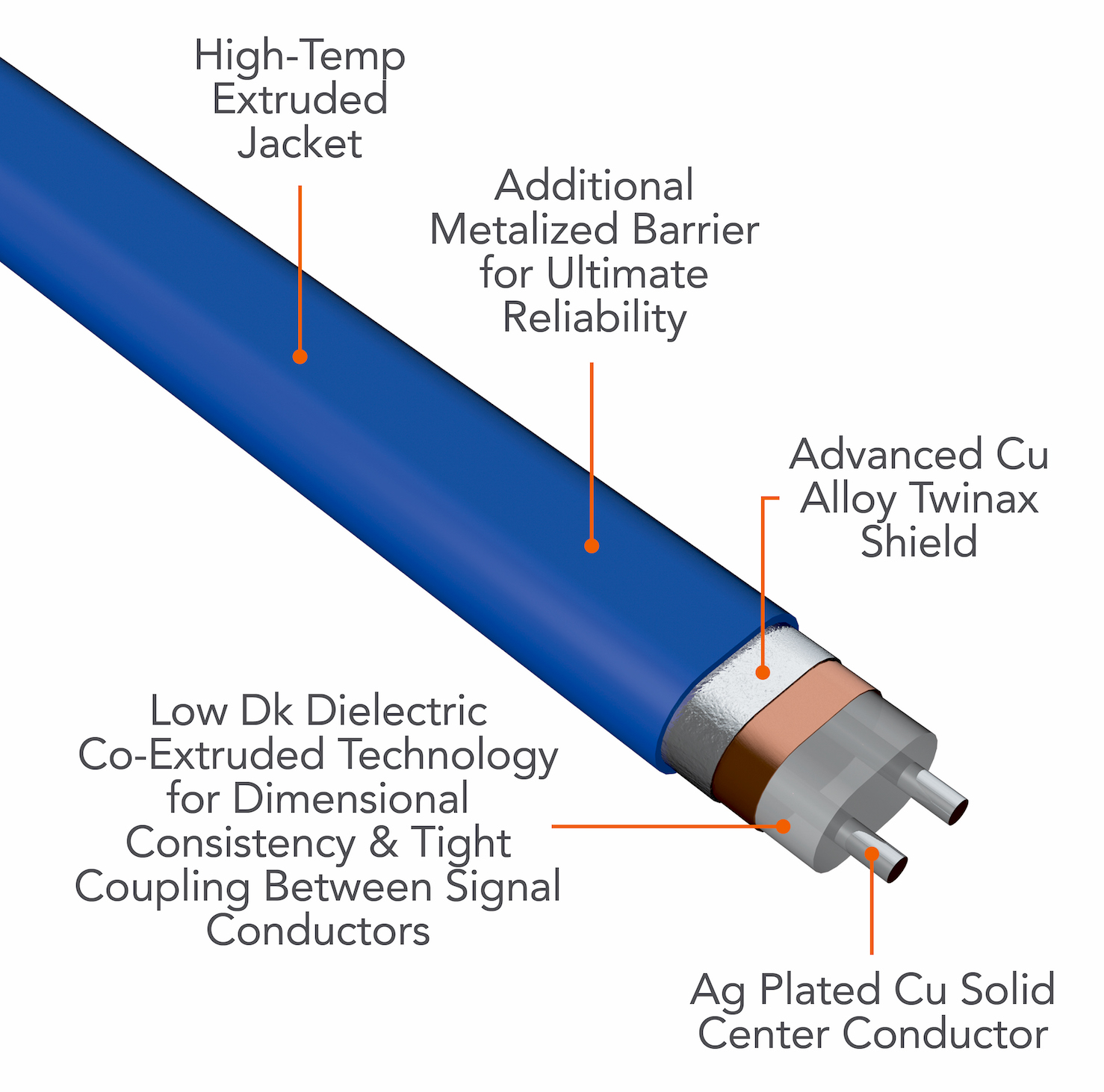
Construction of the twinax cable is critical to overall system performance.
Summary
High-speed cabled backplane designs provide a good example of this solution. Three common challenges designers face with high-speed backplanes include loss, routing density, and skew. Loss is a concern because backplane signal paths are often long. Even when using more expensive high-speed PCB materials, it’s difficult to have trace lengths of any significant distance. In addition, these long paths require a considerable amount of valuable PCB space due to required retimers, which may require larger boards (which is often not an option) or adding layers (which is an expensive alternative).
Glass-weave skew is an increasingly important problem with even higher serial link data rates. The problem is the additional time-delay skew introduced on one line of a differential pair due to local variations in the dielectric constant (Dk). This causes a collapse of the eye from the increasing loss of the differential signal with frequency and the creation of a common signal, which may introduce additional problems. These effects also become more impactful with higher data rates.
Alternately, innovative over-the-board approaches like Samtec Flyover® Technology allow designers to create more flexible system architectures and extend signal reach and density to achieve next-gen speeds by routing signals through ultra-low-skew twinax cable instead of through expensive, lossy PCBs.

Direct-attach Flyover QSFP28 cable assemblies route critical high-speed signals through ultra-low-skew twinax for improved and extended signal integrity.
For more information about Samtec Flyover Technology, visit Samtec online.
Like this article? Check out our 2020 Data Connectivity eBook, our other Connection Basics, signal, and high-speed articles, our Wire and Cable Assemblies and Datacom/Telecom Market Pages, and our 2020 and 2019 Article Archives.
- A High-Speed Connectivity Solution for Achieving 112Gb/s PAM4 Data Rates - August 25, 2020


